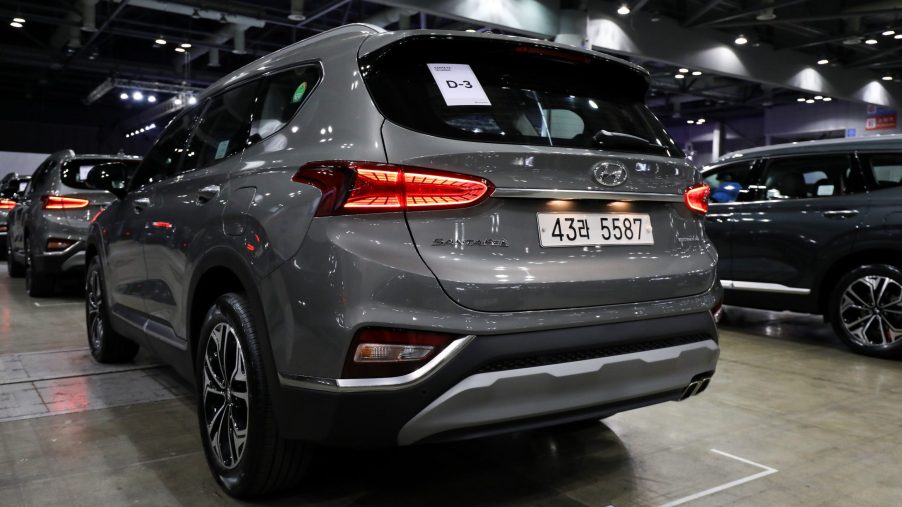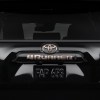
Dangerous 2019 Hyundai Santa Fe Engine Issues Have Led to Fires
It’s fairly irritating when features in your new car don’t work. But despite these inconveniences, these kinds of malfunctions won’t prevent you from getting to work on time or getting the kids back and forth to school. And what’s really disturbing is when current or recent year cars develop recall-level issues. You’re sure to see red if your 2018, ’19, ’20, or ’21 model’s headlights, suspension, or transmission start to fail. Or worse yet, if your engine starts to fail, despite the relatively low mileage you’ve racked up. Unfortunately, the 2019 Hyundai Santa Fe has quickly developed a reputation for engine troubles.
Considering purchasing a recent year Santa Fe? Or do you have a 2019 model parked in your garage? In either case, here’s what you need to know about this car’s troubling trend.
A look at the 2019 Hyundai Santa Fe
The Hyundai Santa Fe is not a bad midsize crossover SUV, per se. But it does have some issues. Completely redesigned this year, the Santa Fe’s exterior is sharp with a wide grille, vertical headlights, and 17-inch wheels. The FWD base model, the Santa Fe SE, is powered by a 2.4-liter inline-four engine that gives you 185 hp and 178 lb-ft of torque and a fuel economy of 22/29 mpg city/highway.
The Santa Fe also has six trim levels. The Limited and Ultimate trims come with a 2.0-liter turbo-four engine that gives you 235 hp and 260 lb-ft of torque as well as 20/25 mpg city/highway. Choose the AWD option and lose 1/1 mpg city/highway on each engine type.
The engine options are a bit underpowered for this segment, and the throttle responsiveness is slow. However, the interior is quite comfortable, offsetting these issues. There’s room for five with generous cargo space of 35.9 cubic feet. If you drop the back row, you’ll expand that to 71.3 cubic feet. Styling in the interior is well-fabricated and is complemented by an intuitive 7-inch touchscreen, rearview camera, and a host of amenities that don’t come standard on many vehicles, like keyless entry.
The Santa Fe also comes with its full range of advanced safety features — a suite known as Smart Sense — as standard across trim levels. Smart Sense includes features like pedestrian detection, automatic emergency braking, lane-keeping assistance, and blind-spot-monitoring that, coupled with the rearview camera, make the base model feel safe and secure.
The previous year’s model was an Insurance Institute for Highway Safety Top Safety Pick+, and the 2019 model received a perfect five-star rating from the National Highway Traffic Safety Administration (NHTSA). Given this attention to safety, it’s all the more surprising that the Santa Fe quickly began to develop engine trouble.
The big starter issue
When you check out Car Complaints, you’ll find Hyundai Santa Fe owner complaints sourced directly from the NHTSA. And there are quite a few that are engine-related, some common to multiple drivers. One such issue involves the Santa Fe’s idle stop and go feature. Drivers with Santa Fe models between 16,000 and 39,800 miles experienced a complete engine shut-off while sitting at red lights. In several cases, drivers with similarly low mileage (16,000, 2,650, 110) on their vehicle lost engine function while driving at a low speed.
Reporting from Houston, Texas, a driver writes: “this vehicle stopped while driving in the middle of a street. I was unable to start the vehicle and me, and my passenger could have been seriously injured or killed. Car was towed to dealership and has 2600 miles on it. I have found that Hyundai is doing a recall to replace starter and a software update. I have been told that because of the new technology this vehicle has, which is an automatic start and stop at a stop sign or stop light that the starter shorted out and apparently, the software in the car just stops the car while driving.. this happened while driving the car at 35 miles/hour on a busy street. It is a miracle that I was not hit and injured or killed.”
However, despite what this driver was told, only one recall covers 2019 Hyundai Santa Fe models — a recall for airbags. This model’s airbags don’t deploy properly in the event of a crash, increasing the risk of injury or death.
Does the Hyundai Santa Fe have a combusting engine?
Another worrisome issue? An engine that could catch fire.
A driver from Columbus, Ohio, states on Car Complaints: “Previous Hyundai vehicle caught fire. At the time, the cause was unknown. Was forced by Hyundai to buy back vehicle and purchased a brand new Hyundai vehicle. I was never told that this was a brand-wide issue and that the new vehicle I purchased would end up under the same recall that caused previous vehicle to catch fire. I am terrified to drive this vehicle. I contacted Hyundai to explain the situation and have been dealing with an unprofessional customer representative. I am fearful for my life in this vehicle and explained when I purchased the new one that I did not want to ever go through this situation again.”
Now, while Hyundai has had some high-profile recalls related to potential engine fires, the 2019 model has not been a subject of those recalls. One such recall involved the 2012 Santa Fe, while another more recent recall involves Hyundai Tucsons manufactured between 2016 and 2021. In the former case, a loose rod bearing could potentially puncture the engine block, creating a potential fire risk. In the latter case, a defective ABS circuit board could catch fire after short-circuiting.
Neither of these issues fills Hyundai owners with much confidence. And while this 2019 Hyundai Santa Fe owner’s experience appears isolated, it is worrisome nonetheless. If you experience similar engine issues, make sure to take your car to a repair shop without delay.


